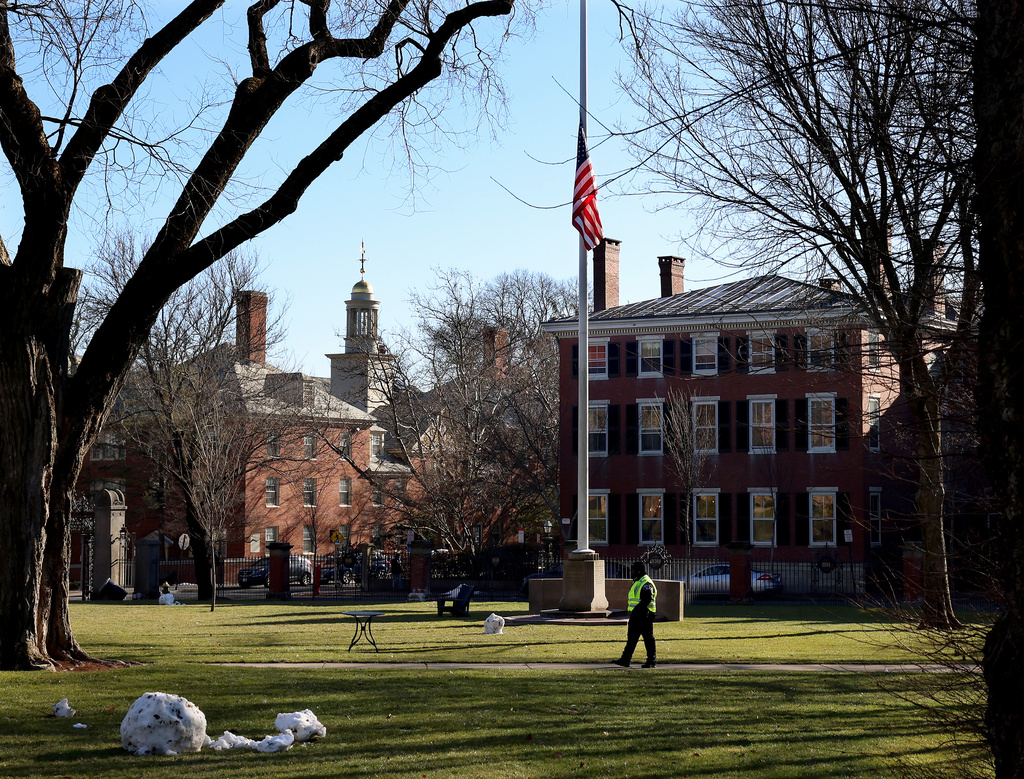Their childhood memories are vivid: warnings against drinking or cooking with tap water, enduring long lines for cases of water, washing from buckets filled with heated, bottled water.
But the children of the Flint water crisis — set in motion April 25, 2014, when the city began drawing water from the Flint River — have turned their trauma into advocacy.
They know Flint still struggles: Its population has fallen by about 20,000 in the past decade, leaving abandoned houses frequently targeted by arsonists. More than two-thirds of children live in poverty, and many struggle in school.
But young activists say they want to help make a difference, change how their city is perceived by outsiders — and defy expectations.
“One of the biggest issues about growing up in Flint is that people had already decided and predetermined who we were,” said 22-year-old Cruz Duhart, a member of the Flint Public Health Youth Academy.
“They had ideas about our IQ, about behavioral things, but they never really stopped to speak to us and how we thought about it and the type of traumas that we were going through.”
Sima Gutierrez collects water samples from residents' homes and takes them to the Flint Community Water Lab, where more than 60 high school and college interns have provided free testing for thousands of residents since 2020.
She helps plan public awareness campaigns about topics like gun violence and how racism affects public health as a member of the Flint Public Health Youth Academy.
“I wanted to be surrounded by people who weren’t going to cover up the whole fact that people are still having problems ... to share my life (with) anybody else who’s going through what I’m going through,” said Sima, 16.
A decade ago, she complained about stomach pains when she drank water, but her mom believed it helped Sima’s body flush medication she took for an autoimmune disorder that was causing her hair to fall out in patches and leaving her skin splotchy.
Sima and three of her sisters were found to have elevated lead levels and have been diagnosed with attention-deficit hyperactivity disorder; Sima also has a learning difficulty, her mother said.
Residents had been assured the water was safe when many complained of skin rashes and discolored, smelly and foul-tasting water after the city disconnected from Detroit-supplied water to save money.
But a year and a half later, a water expert found high lead levels in the tap water, caused by the city's failure to add anti-corrosion chemicals, which state environmental officials said was unnecessary. A physician also discovered that levels in kids’ blood had doubled.
The potent neurotoxin can damage children’s brains and nervous systems and affect learning, behavior, hearing and speech. There is no safe childhood exposure level, and problems can manifest years later.
Data collected over a decade now show that Flint children have higher rates of ADHD, behavioral and mental health problems and more difficulty learning than those assessed before the water crisis, said Dr. Mona Hanna-Attisha, the pediatrician who flagged rising lead levels in Flint kids’ blood. She said issues such as nutrition, poverty, unemployment and systemic inequalities also could be factors.
But Flint kids are resilient, she said, and have made important contributions to the city's recovery. The Flint Youth Justice League, an advisory board to her Pediatric Public Health Initiative, for example, has offered advice on programs to reduce poverty and connect residents to public services.
“Our young people are amazing,” said Hanna-Attisha. “They are not okay with the status quo and they are demanding that we do better for them and for generations to come.”

Why do we celebrate Earth Day?
Earth Day was first recognized in 1970 as a joint initiative between a Republican and Democrat in Congress.
Asia Donald remembers feeling helpless and bewildered when her little sister developed rashes and her mom boiled pot after pot of bottled water for baths.
But a couple years later, she was guiding kids from Newark, New Jersey, as they experienced their own water crisis. Over Zoom meetings, the kids from Flint explained parts per billion, how to test water for lead and how they'd coped with fears.
“They felt the exact same way that I felt when I was ... going through it,” said Asia, 20, one of 18 interns at the Flint Public Health Youth Academy.
They’re paid a monthly stipend to run the academy — writing grants, creating budgets, analyzing data, running meetings and creating public awareness campaigns. They have a biweekly talk show on YouTube, where they’ve discussed everything from mental health to COVID.
Dr. Kent Key, a public health researcher with the Michigan State University College of Human Medicine in Flint, started the academy after studying health disparities in African American communities as part of his doctoral dissertation.
"I felt like everyone had written Flint youth off,” he said. “I did not want (the water crisis) to be a sentence of doom and gloom ... I wanted it to be a catapult to launch the next generation of public health professionals.”
One of the academy's frequent partners is Young, Gifted & Green.
Flint resident Dionna Brown, national director of the organization's youth environmental justice program, plans a two-week summer environmental justice camp in Flint every year. Teens learn about policy, climate justice, sustainability and housing disparities.
Brown became interested in advocacy during a class on environmental inequality at Howard University. Now she plans to become an environmental justice attorney.
“I tell people all the time: I’m a child of the Flint water crisis,” said Brown, who was 14 when it began. “I love my city. And we put the world on notice that you cannot just poison a city and we’ll forget about it.”









